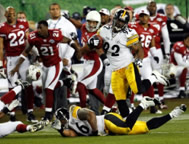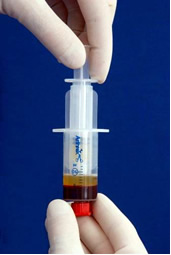** Recently Released, ACP Max™ Platelet-Rich Plasma System**

Click hyperlink below:
The ACP Max™ system provides efficient concentration of platelets and growth factors from platelet-rich plasma (PRP) for use at the patient’s point of care. Expanding on the previous generation of PRP devices, the ACP Max system allows for a larger blood draw and provides increased platelet concentration using a unique double-syringe, double-spin design.
When tendons and ligaments are damaged as a result of injury or overuse, small microscopic tears may develop as part of a condition known as tendonosis. Although these tissues are strong and help us engage in all kinds of physical activity when they are healthy, they do not heal well when damaged by a sprain or by overuse, since they have a poor blood supply.
Certain elements within the blood, specifically the platelets, help tendons and ligaments heal by stimulating a repair and growth response that accelerates the process of developing of new tissue.
Unfortunately, the tendons and ligaments do not receive a rich supply of these valuable nutrients, which is why they often take a long time to heal and can cause patients severe pain within the elbow, shoulder, knee, ankle, and other areas.
Platelet-rich Plasma has been used for over 20 years in the medical community mostly to enhance the healing response in cosmetic and ENT surgeries.

Recently, there has been heightened interest and awareness in utilizing it to treat musculoskeletal injuries, particularly in the sports medicine world. You likely have heard about Hines Ward receiving it 2 weeks prior to the Super Bowl to heal an injured ligament in his knee which allowed him to compete effectively and helped the Steelers win the Super Bowl. Countless other professional athletes have received it as well such as Rafael Nadal, and Tiger Woods just to name a few.
What is platelet-rich plasma?
Platelet-rich plasma (PRP) or Autologous Conditioned Plasma (ACP) is plasma with a high concentration of platelets, which contains a large amount of proteins which enhance the body’s natural healing response. These concentrated proteins or growth factors can initiate and accelerate new tissue growth within the tendons and ligaments to repair damage and relieve symptoms for patients with tendonosis, muscle injury, arthritis or other causes of chronic pain.
Injecting platelet-rich plasma into damaged tissue is an effective yet minimally invasive treatment option used to relieve pain and other symptoms caused by this damage. By enhancing the body's natural healing abilities, patients are able to enjoy a faster and more thorough healing process that relieves symptoms and allows them to return to their regular activities.
What is platelet-rich plasma used for?
Platelet-rich plasma injections can be used to treat a wide range of orthopedic conditions, including:
- Tendonitis
- Muscle injuries
- Ligament sprains
- Arthritis
- Bursitis
- Joint pain
This treatment can also be used to speed and enhance the healing process and reduce the risk of infection after surgery. It has been used to supplement rotator cuff repairs, ACL surgeries, Achilles repairs and joint replacement surgeries.
How does this procedure work?
During the PRP injection procedure, a small amount of blood (10 ml) is taken from the patient and placed in a unique, self-contained, sterile processing double-syringe system to separate the platelets and plasma from the less desirous white and red blood cells. The double syringe system is then placed in a centrifuge and concentrated for 5 minutes at 1500 rpms/minute. The supernatant rich in plasma and platelets is the PRP and is aspirated into the second sterile syringe. The PRP is then injected into the targeted tissue to stimulate the healing process.

This procedure is performed under local anesthetic, which numbs the injection site to minimize pain for patients. Most patients tolerate the injection well and experience little to no discomfort from the injection.
Most patients require one to three PRP injections in order to achieve the desired results from this procedure.
Your doctor will evaluate your condition a few weeks after the initial treatment to determine whether or not additional injections are needed. This treatment can be combined with exercise or physical therapy in patients with acute injuries.
What can patients expect after the PRP procedure?
After platelet-rich plasma injections, patients may experience soreness and aching for several days, which is a sign that the healing process has begun. Tylenol and ice may be utilized if needed to help alleviate these symptoms. Over-the-counter anti-inflammatory medications (Advil, Aleve, Ibuprofen and other NSAIDs) should be avoided for the first 48 hours after the injection so as not to inhibit the healing cascade put into effect by the PRP. Patients can return to work and other normal activities immediately after treatment, but should refrain from heavy lifting and strenuous activity for a few days.
What are the benefits of this procedure?
For many patients, platelet-rich plasma injections offer significant relief from pain and other symptoms, and may eliminate the need for surgery or long-term medications. This treatment also promotes the healing process and allows patients to return to their normal activities faster than with other nonsurgical treatments.
Are platelet-rich injection safe?
Since the PRP is produced from the patient's own blood, there is very little risk for complications with this procedure. There is always a risk of infection with any type of injection, but most patients undergo this procedure with no problems.
Your doctor can help you figure out if this procedure is right for you. If you are interested in learning more about platelet-rich plasma injections, please call us today to schedule an appointment.

